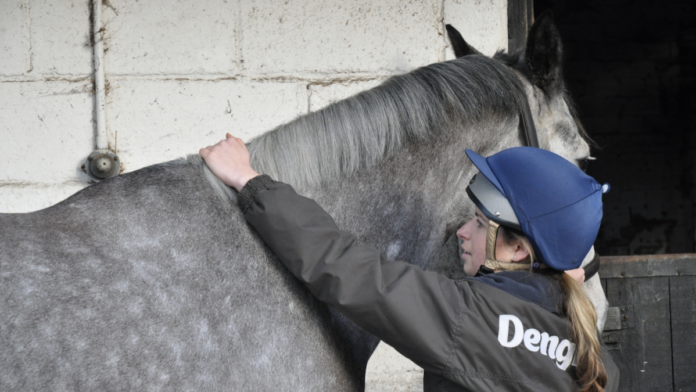Winter Weight Management
By Tracey Hammond, M.Sc (Dist), equine nutritionist at Dengie
Whilst it may seem early to think about winter feeding in October, it is good to encourage customers to prepare for winter. For owners of horses that are overweight or that hold their weight with ease, winter is generally an easier time to promote weight loss. Poor do-ers, however, are likely to need additional supplementary feed to keep them in good condition which some customers may need to budget for, especially if they require a forage replacer.
What is good condition?
Owners should be encouraged to regularly body condition score their horse throughout the year with the aim of keeping them at a healthy weight. The best thing about body condition scoring is that no costly equipment is required and it can be applied to a range of shapes and sizes of horse and pony.
Body condition scoring uses a graded scale to give a more objective way of determining how fat or thin a horse is. When using a 0 to 5 body condition score scale there are 3 key areas to look at which are the crest of the neck, over the ribs and over the quarters running into the top of the tail area. The degree of fat cover is determined, and an overall score given. On this scale a body condition score of around a 3 would be considered a healthy weight with some seasonal considerations.
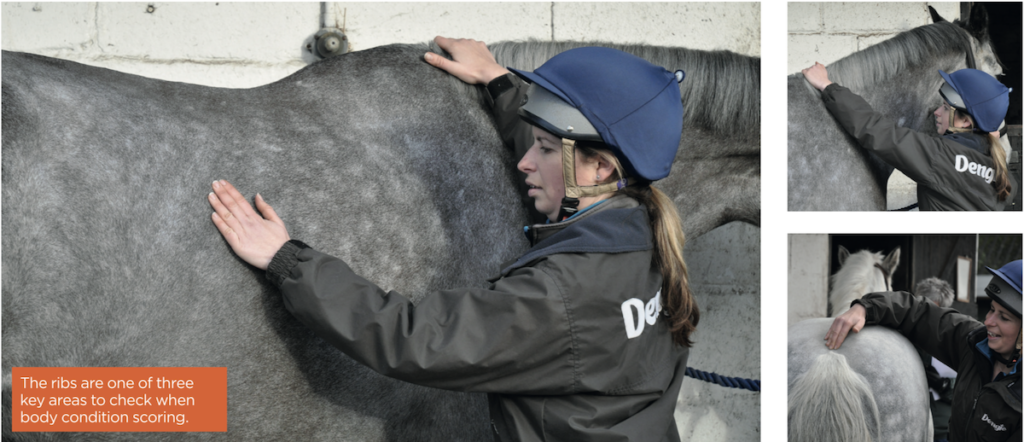
For example, for a good do-er it would be considered appropriate to have them come out of winter leaner than a condition score 3 to allow for some spring weight gain. A condition score of above 3 in the Autumn or early winter would be considered advantageous for a poor do-er that typically doesn’t hold weight over the winter so that it can afford to lose weight without becoming excessively lean.
In addition to body condition scoring the regular use of a weigh tape can help to identify changes in weight before they escalate, allowing the owner to act sooner rather than later with changes in feeding management.
Managing the Good Do-er
For owners of horses that maintain their weight with ease or that are overweight, winter is an excellent time to encourage weight loss. Winter weight loss is important to avoid obesity long term as a horse can ‘afford’ to regain some weight again from spring/summer grazing without becoming obese year on year.
The mainstay of the diet for good do-ers should be forage either in the form of grazing or conserved forage if stabled. For those at grass, weather conditions will dictate how much grazing is available; just because the grass may look a bit brown and dull compared to the spring and summer don’t assume it isn’t a potential problem. Horses that are overweight may still require grazing restriction over the winter especially if weather conditions are mild as has been the case in recent years. A grazing muzzle or strip grazing are useful tools to manage grass intake during turnout.
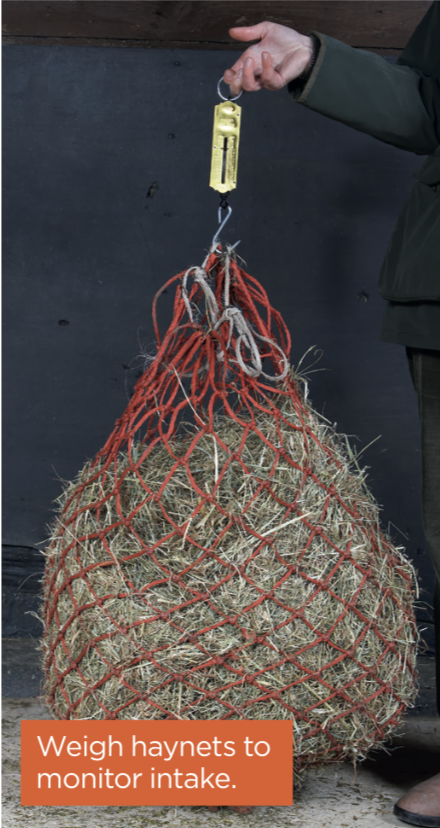
Winter stabling for those without turnout provides the ideal opportunity to have total control over the horse’s intake, but also brings the responsibility of trying to keep the horse healthy, happy and occupied. To encourage weight loss, try to select low calorie forage in the form of later cut hay and consider replacing up to 30% of the hay ration with straw for further calorie restriction. Straw must be introduced to the ration gradually to allow the horse’s digestive system time to adapt and must be as clean as possible to reduce the potential challenge to the respiratory system from mould spores.
The overall amount of forage may have to be restricted in order to promote weight loss. At minimum this should be 1.5% of the horse’s current bodyweight on a dry matter basis. This would equate to 7.5kg dry matter for a 500kg horse, or 8.8kg of hay as fed, assuming the hay is 85% dry matter. This lesser amount of forage will not keep the horse occupied for as long as ad-lib feeding and therefore it is vital to encourage the horse owner to take steps to increase eating time. Dividing the forage into smaller portions at regular intervals is one way of achieving this in addition to the use of slow feeders or small holed haynets.
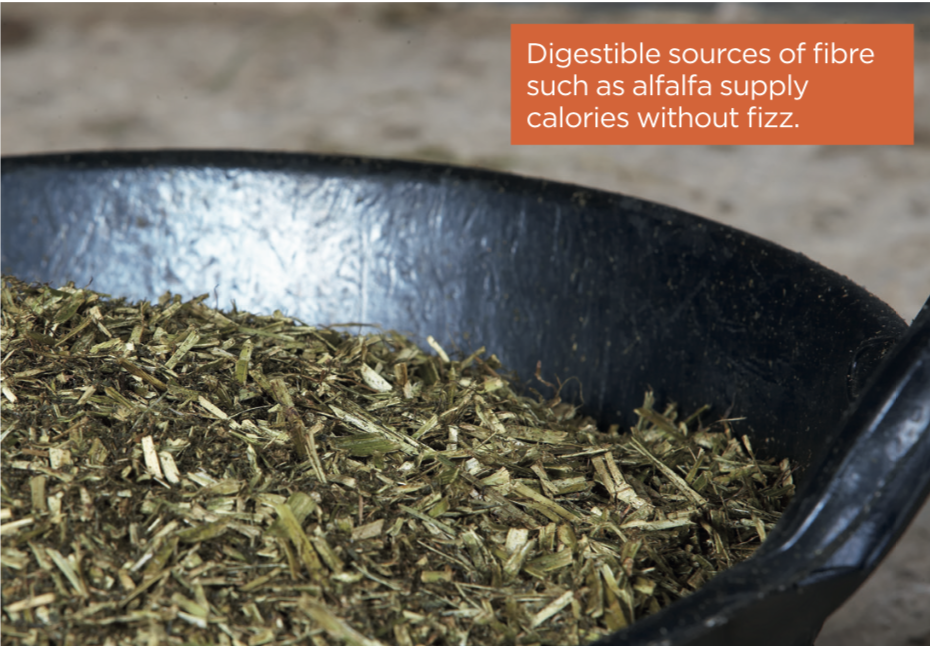
Whilst overweight horses and ponies do not require a bucket feed for the purposes of energy provision, it is still important that they have a bucket feed to top up on nutrients commonly lacking in forage. UK pasture and forage typically lacks the trace minerals copper, zinc and selenium and conserved forage also lacks vitamin E. A low-calorie fibre feed can be fed alongside a feed balancer or vitamin and mineral supplement appropriate to the horse’s workload to ensure that they get everything they need without the calories they don’t!
Managing the Poor Doer
For poor doers it is important to ascertain whether there is an underlying cause for weight loss beyond colder temperatures and less nutritious grazing. Common culprits that should be checked for include poor dentition, worm burden and pain. If all is well, then we need to look to increase the overall energy intake to promote weight gain or maintenance over winter.
As a starting point carry out a MOT on the current feeding and management regime. Start by recommending ad-lib forage if it isn’t already offered and encourage the owner to double check how much the horse is actually eating by weighing what’s offered versus what’s left. A horse can easily eat 2% of their bodyweight in forage daily when stabled and if they aren’t eating this much then why not?
Also look at the quality of the forage, if it is coarse and stalky it may be more mature and therefore lower energy. Soft leafy hays or haylage will be more digestible and therefore higher calorie options for the forage ration. Offering multiple types of forage in the stable such as hay, haylage and even a bucket of chopped grass can help tempt the finicky eater to consume more and engage the horse in more foraging activity.
For those that struggle to maintain weight or that are continuing to work hard through the winter such as those out hunting, then a higher calorie bucket feed in addition to grazing and forage will be required. The type of bucket feed chosen will depend on the horse’s workload, their appetite and other factors such as how excitable they are.
For horses that struggle to maintain weight and that are excitable, recommend feeds based on slow-release energy sources such as fibre and oil as research has shown that horses fed this type of ration are calmer and more consistent in their behaviour. Utilise more digestible sources of fibre such as alfalfa, grasses and sugar beet alongside additional oil and a balancer or vitamin and mineral supplement to supply energy or calories without the fizz.
For horses that have a limited appetite and need to gain weight mixes and cubes offer a palatable, concentrated solution. Less is definitely more when it comes to meal size and so it is better to chose a higher energy product that can be fed in lesser amounts than a low energy product that has to be fed in large amounts in order for the horse to maintain weight. The horse’s stomach is relatively small and feeding large meals results in a more rapid transit of feed through the digestive tract. This reduces digestive efficiency and increases the risk of digestive upsets if undigested starch reaches the horse’s hind gut. Overall meal size should be restricted to less than 2kg per meal and the starch content should be less than 1g of starch per kg of bodyweight per meal or 2g of starch per kg of bodyweight per day to try to maintain a healthy digestive system
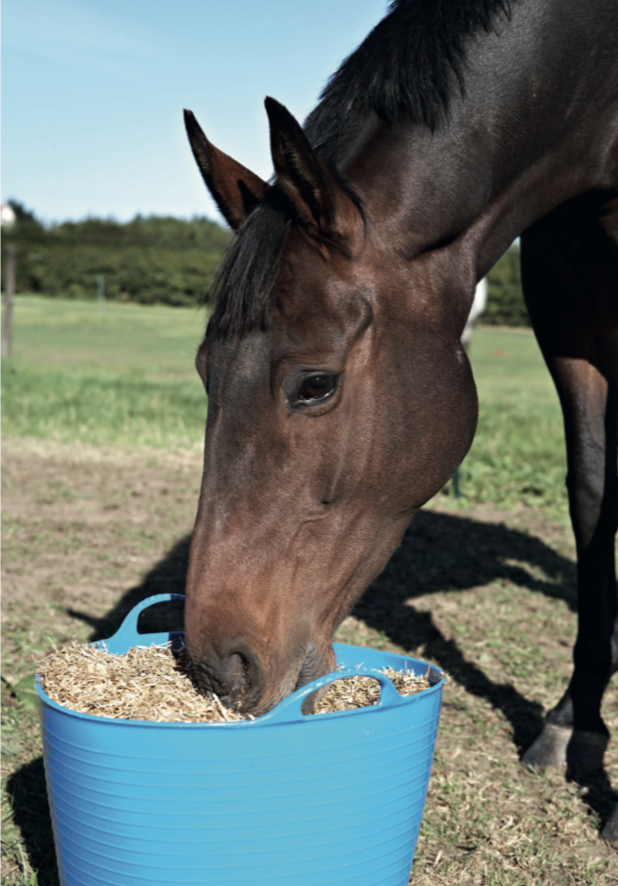
Many mixes and cubes are fortified with additional vitamins and minerals and so when fed at the recommended quantity no additional vitamin and mineral supplements are required. Adding chopped fibre to the bucket feed helps to slow the rate of intake and encourage chew time. This is beneficial as chewing promotes saliva production and saliva is important as a natural buffer to acidity within the digestive tract.
Poor do-ers may also benefit from the addition of a digestive aid to their ration to promote efficient fibre digestion. Products that contain a probiotic in the form of a live yeast, or prebiotics are beneficial for promoting efficient digestion helping the horse to get more out of what it consumes.










